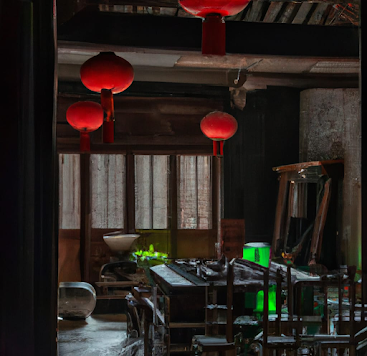China Tea Culture
The history of tea is beginning in ancient China. It has history of 5000 years. 茶馆 pronounce as chá guǎn is traditionally a place which offers tea to its customers. People gather at teahouses to chat, socialize and enjoy tea, and source of entertainment since ancient times. Even though the role of a tearoom varies depending on the situation or region, teahouses, like coffeehouses, are frequently used as social gathering places.
Laoshi Tea House
Laoshi the famous Chinese play writer and novelist write a play about Chinese tea house which published in 1957.
The play forms a complex picture of social life in the three historical periods of the last year of the Qing dynasty.
From the late Qing dynasty change in the first act shows the decay and chaos of the last years of the Qing dynasty: in the yutai teahouse that is thriving on the surface. The second act depicts the scene of social turmoil and people's livelihood during the warlord melee in the early republic of China. The third act recreates the dark scene of the Kuomintang dictatorship and the Japanese invasion.
After half a century, the social changes of this half-century are vividly reflected in "the tea house". In Lao she’s words: "a big teahouse is a small society", Mr. Cao Yu commented in his later years: "'teahouse' is an unprecedented example in the history of Chinese theater".
Different from ordinary theatrical works, "the tea house" is not to tell a specific story, it is to show the social situation of China's semi-colonial and semi-feudal society represented by three historical periods, in the words of Lao She, it is to "bury the three eras". The purpose of the creation of the "tea house" is here. Lao she, who has always been unfamiliar with political struggles, adopts a writing method that avoids life and is familiar with it and uses the social and cultural changes that he knows well to reflect the political changes in society. The portrayal of the spiritual crisis of the masses in the old era in "the tea house" is mainly completed with the help of three key characters in the play---- Wang lifa, Qin zhongyi and Chang siye. Laoshe complained bitterly about the strangeness and ugliness of that era through the tragic fate of three kinds, simple and upright characters.
Ancient Beijing Tea House
Taking the rise and fall of a large teahouse in old Beijing as a clue. In old Beijing, there were a lot of storytelling teahouses where the main aim was to listen to the stories. The famous teahouses in Beijing are meticulously designed and furnished, offering the perfect setting for listening to stories. Furthermore, there were teahouses in Beijing where people play chess. There's also a posh with aristocratic decorations, imitating ancient Beijing's imperial tradition.
Lao she teahouse was named after the famous writer and artist Lao She and his well-known play Teahouse. Laoshi tea house as a set that represent the class-based society of ancient China hierarchy. The first floor of the tea house shows the lower-class culture where people sat side by side in a hall and enjoying tea. The second floor of the tea house shows the upper class of the society having cabin like private rooms which were well furnished and decorated.
Overall tea houses of the old times represent society's disregard and people's mental numbing. Lao She Teahouse presents a miniature cultural and commercial version of the old Beijing.




0 Comments